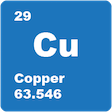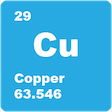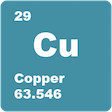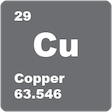Kingdom Agriculture develops Copper Ionization Systems that are fully-automated and customized to reduce or eliminate the use of chemicals for pathogen control and disinfection.
%
Copper Ionization kills 99.9% of E. Coli.
Copper Ionization is 800 times stronger than copper-based fungicides.
%
Up to 100% pathogen control.
In organic and non-organic markets, Copper Ionization produced at the proper part per million (PPM) will reduce or eliminate: E. Coli, Pythium, Phytophthora, Erwinia, Xanthamonas, Agrobacteria, Ralstonia, Clavibacteria, Ramorum, Listeria, Chalara, Algae, scale, and bio-slime.
Why Kingdom Ion is the choice for pathogen control and disinfection
Unlike other disinfection systems, Kingdom Ion™ controls pathogens by carrying free copper from the point of injection throughout the irrigation system to the plant roots.
Failure to control pathogens, increases the potential for operational risks and financial loss proportionately with the size of the growing operation.
Growers can use copper ionization to treat water from a stream, pond, or reclaimed water from a greenhouse to reduce or eliminate the use of fungicides while providing superior pathogen control.
Detecting, isolating, and controlling waterborne pathogens in post-harvest food safety and disinfection is growing ever more important.
Some of the country’s largest, most successful growers of plant and food crops are already using copper ionization systems.
Some of the largest plug producers in the world rely on copper ionization.
Kingdom Ion can provide pathogen control in organic markets.
On average growers are seeing a return on investment in 6-18 months depending on system usage and biological issues.
Kingdom Ion™ is the only copper ionization system in the world that can supply consistent free copper treating as little as 2.0 GMP.
Copper Ionization: How it works

Copper Ionization is the process of producing positively charged copper ions (Cu++) known as “free copper”.
Free copper (Cu++) is 800 times more powerful than bound copper. This allows for the control of pathogens with 1-3 PPM of free copper instead of 800-900 PPM of bound copper.

Copper ionization kills harmful (pathogenic) bacteria and fungi by penetrating the cell membrane and inoculating the organism.
Copper ionization does not destroy “good” bacteria, as most non-pathogenic bacteria have a gram-positive charge.

The delivery of exact amounts of copper ions, a natural biocide and plant micronutrient, reduces or eliminates biological issues and increases plant nutrient uptake and germination rates.
Copper Ionization reduces pressure from pests and disease, increases germination rates, and decreases the use of expensive chemicals.

Copper ionization controls algae which reduces or eliminates problems with fungus gnats and shore flies.
Copper Ionization increases calcium uptake.
“Ionized copper provided control at a copper concentration that was 800-fold lower than with the cupric hydroxide. This was probably because of the high solubility of the ionized copper and the positive charge of the ion that attracted the bacteria. With the ionized copper, there also is much less copper applied, which should reduce run-off of copper onto the soil. Ionized copper easily could be incorporated into the overhead irrigation systems used by many transplant growers.”
– University of Florida professor Donald L. Hopkins and biologist Constance M. Thompson
“Copper provides a stable disinfectant residual in water and appears to be relatively effective for bacteria and viruses.”
– North Carolina State University professor Dr. Otto D. Simmons III
“Valuable in treating recirculated or pond water. Given the stability of copper in water, this may be a suitable disinfectant that can be applied to irrigation water for control of microbial contaminants on farms.”
– Founder, Fischer EcoWorks Ratus Fischer
© Kingdom Agriculture | Built by NICE GRIZZLY
© Kingdom Agriculture
Built by NICE GRIZZLY